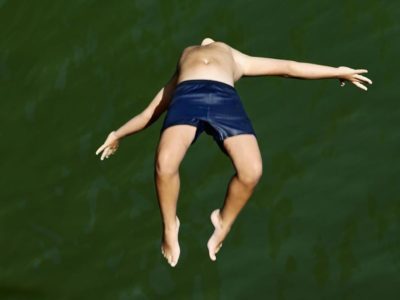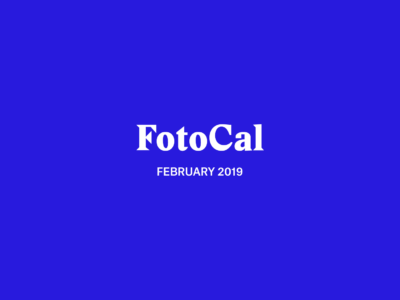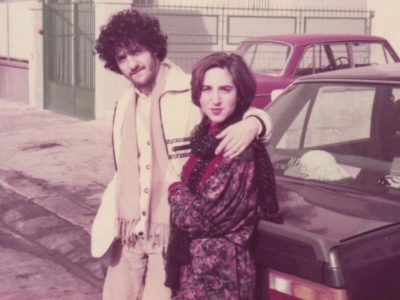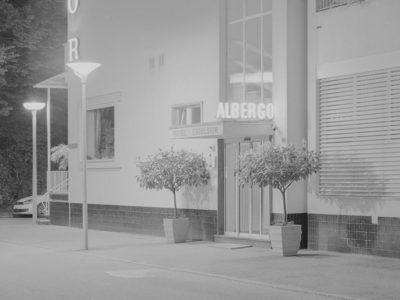Who’s the Witch Now? Alíz Veronika Ács Surveys the Idea of Witchcraft in Contemporary Societies
26 year-old Hungarian photographer Alíz Veronika Ács presents Witch and Walpurg, two projects inspired by a broad interpretation of witchcraft and how it manifests itself in contemporary societies. Besides exploring the same themes, the two bodies of work have something else in common: a physical approach to the printed image consisting in several manual manipulations of the prints.
Hello Alíz, thank you for this interview. What are your main interests as a photographer?
Thank you very much for this opportunity. I would say that my main interests revolve around the exploration of the person, the human form, transcendent experiences and facial expressions, especially the eyes: looking, glancing, and staring. I am also guided by the accidental irregularities that we as humans experience in our daily lives. My interests however go further than abstract themes or subjects, onto an interest in textures, surfaces, and materials – the practicalities of texture and material morphology as they come into contact with external agents and elements such as the interplay between light, water, textile and/or paper.



Please introduce us to your series Witch.
Witch is an exploration of what witchcraft is – what it was and what it has become. Witchcraft and the ideology behind it was and continues to be, encased in belief, religion, myths, and the world of the supernatural. Contemporary witchcraft is informed by the same mcehanisms of the older days: we fear what we don’t understand, thus anything that deviated and still deviates today is considered strange or unwanted, unnatural. Although today these “deviants” or “deviations” are not categorized as witches or witchcraft anymore, they are still attacked through societal expulsion, labeling, and stigmatization. In cases like this, the identity of the deviant individual is taken away, restructured or destroyed, making identity not one’s own but rather the product of an exclusionary crowd.
The Witch project strives to introduce the subject of witchcraft from a general standpoint. Looking back at literature on the subject of witchcraft itself, the label of “witch” was applied to anyone – including men, in some cases – who bore physical features that were in some way irregular, abnormal, or just rare, but also to those who simply represented a lifestyle not in line with that of the general population. The consequences of being labeled a witch resulted in the enactment of a “trial”, a task that the labeled individual had to complete so as to determine the legitimacy of the label itself. My work is thus not only a depiction of witchcraft, femininity, or magic, but it interprets the exclusion and stigmatization of those assigned the label of witch through the manual manipulation of each image.



Can you describe the manipulations and techniques you used in more detail?
Gradients of color are printed on the backside of the images to represent the burning at the stake or the trials by drowning [a practice for which an individual accused of witchcraft was considered innocent if he or she survived drowning]. This, in addition to manual interventions like tearing or scarring the prints, creates the visual illusion of burning embers or flowing water upon the portrait of the “witch”, and allows the image to possess a magic of its own. The materials and textural manipulations present in the work are there to complement the images themselves. I was not able to imagine the execution of this project solely through static images. The images needed to contain something that would affect other sensory organs like touch or smell.
What inspired Witch?
My work is almost always linked in some way to my family history. At the beginning of my university studies, I worked on a project that entailed discussion on afterlife and the connections between the living and the dead. The house where my great-grandparents lived became the site of my inspiration, since the entire house, although completely abandoned, remained intact, as if awaiting the return of the deceased. I began exploring the house, as well as searching for the history of both the house and my family. The project became almost a process of mourning and letting go of those who had passed on. It was this process and the personal experiences that first introduced me to motifs of transcendence, the existence of the afterlife, and the experience of the “sacred”. These motifs were then revisited in the Witch project, the exploration of dual meaning, the representation of the self, identity, explanations of the unfathomable, and processes of exclusion.



Let’s move on to your latest work Walpurg (in progress). What is it about? What inspired Walpurg, and what are you trying to communicate with this body of work?
Walpurg uses the Witch project as its basis, of which represents in fact a continuation. Walpurg aims to find contemporary equivalents of what would have been labeled as witches in earlier centuries. I wanted to create portraits of the physical human features that in older times would have been taken for signs of witchcraft, and explore a modern projection of these past motifs without manipulating the prints. What in Witch I had been expressing through physically altering the pictures, in Walpurg I’m trying to express it through the actual, human form: rare bodily features, scars, characteristic facial traits, manipulations the subjects operated on their own bodies. These females are strong, independent, unique, timeless. Important visual effects I wished to communicate were the suggestive gazes and heroic appearances of the photographed subjects. Victims may become the heroes, while heroes may become the victimized.





Walpurg also introduces some degree of experimentation, including the use of small format prints…
When the Walpurg project was exhibited, the images were printed at 105x135cm and mounted slightly higher than eye level. This way, the images were physically positioned so as to reflect the burden of stigma, the weight of one’s own conscience, a looming bad omen, a crucifix bearing down on the congregation.
Alongside the production of Walpurg, I simultaneously continued theoretical research into iconoclasm: the destruction of religious images and monuments. I analyzed the motivations behind such acts of destruction, as well as searching for examples of physical alterations of the images within the history of the fine arts. I applied this to my own work, wherein building on the idea of destruction I looked at the function that “invisibility”, the “concealed”, and the “missing” pieces of images further add, as opposed to take away, from the image itself. I also wanted to ensure the impossibility of reproducing the images, as well as the ability to touch, and physically interact with the photographs. The material qualities of the medium upon which the photographs are printed also add layers of meaning. All of this was further explored in the small print images and ensuing works.




Did you have any specific references or sources of inspiration in mind while working on Witch and Walpurg?
Naturally, I followed and read literature on the subject of image destruction, as well as explored the subject of witchcraft from an academic perspective, but my work is a personal reflection on the subject itself. When the photograph is produced, the image itself dictates the physical process to which it will be subjected.
Where does your experimental approach to photography come from?
The experimentations I used for Witch are the result of a “creative accident”. While working with the images and deciding what kind of manipulations to operate, a piece of cellotape stuck onto one of the photographs. After pulling it off, I placed the picture in front of a lamp, so as to see it clearly from afar. The effect of the light piercing the “weakened” paper became the inspiration for the rest of the project. You see, this is why I love working with paper, because the effects are always different: soft, hard, plastic, rigid, transparent, solid. The paper also becomes part of the image, and not just a support. It can even replicate human skin…
Working on the prints continues to be a part of my process. I use different techniques gleaned from other modes of artistic expression such as painting, sculpture, architecture, and restoration.
What have been the main influences on your photography?
When I started working with photography, I always felt that the simple production of an image was not enough. I felt the need to physically touch the photos, to add to them with my own hands. The digital image created with a camera is – for me – not the final product, but rather the beginning, the first step in image creation.
I am highly sensitive to, and enjoy the process of medium selection, the art of choosing the most functional material with which, or through which I supplement and create the meaning of the image.
Who are some of your favorite contemporary photographers?
Arnulf Rainer, Borden Capalino, Zsuszanna Ujj.

Choose your #threewordsforphotography.
Magic. Rip. Experimental.
Keep looking...

Niall McDiarmid’s Street Portraits Show How Small-Town Britain Looks Like Today

John MacLean Photographs the Hometowns of the Artists Who Influenced Him

Things Are Not Okay for the People Living in Western Athens (Photos by Vaggelis Tatsis)

FotoCal — Photography Awards, Grants and Open Calls Closing in February 2019

Viviana Bonura Is Using Instagram to Share Photos of Her Parents as a Young Couple in Love

FotoFirst — Carlo Rusca’s Pictures Create an Imaginary Location in Black and White

Pierre-Elie de Pibrac Takes Close-up Portraits of Cuba’s Guajiros




